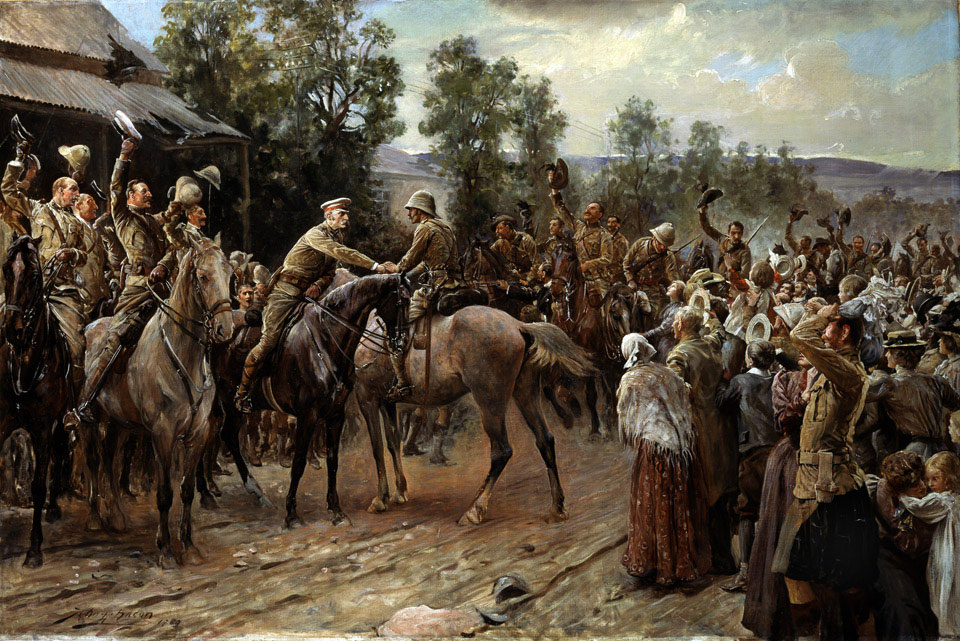
Online Collection
« Prev - 1 of 1 results - Next »
The Relief of Ladysmith, 27 February 1900
Oil on canvas by John Henry Frederick Bacon (1868-1914), 1900.
The Siege of Ladysmith was one of the most famous incidents of the Boer War (1899-1902). Following initial successes against the invading Boers at Talana and Elandslaagte (20 and 21 October 1899), Lieutenant-General (later Field Marshal) Sir George White (1835-1912) commanding the Natal Field Force, was driven back. White concentrated his forces at the strategic town of Ladysmith where he was besieged by Boers. Some 13,500 troops, the vast majority British regulars, were confined with 7,500 civilians within a 22.5 km perimeter.
The Boers began their bombardment on 2 November with 17 guns, later increasing to 22. During the siege, the inhabitants of Ladysmith made a number of unsuccessful sorties, while the Boers tried hard to take the town by storm. By the end of January the full rigours of the siege began to be felt in the town, where there was an alarming increase in sickness. The serious shortage of food led to the introduction of horseflesh into the rations.
General Sir Redvers Buller (1838-1908) and his troops finally relieved the town on 28 February. In this painting, which may not depict an actual event, Lieutenant-General Sir George White shakes hands with Colonel (later Lieutenant-General) Lord Douglas Hamilton, 12th Earl Dundonald (1852-1935), representing Buller's relieving force at nearby Pieter's Hill on the outskirts of Ladysmith.
Known as the 'Bovril War Picture', the photogravure of this picture was sponsored and offered free to those who collected 21 shillings-worth of special coupons which accompanied bottles of the product sold in 1901.
NAM Accession Number
NAM. 1996-04-1-1
Copyright/Ownership
National Army Museum, Out of Copyright
Location
National Army Museum, Myth and Reality: Military Art in the Age of Queen Victoria
Object URL
https://collection.nam.ac.uk/detail.php?acc=1996-04-1-1

